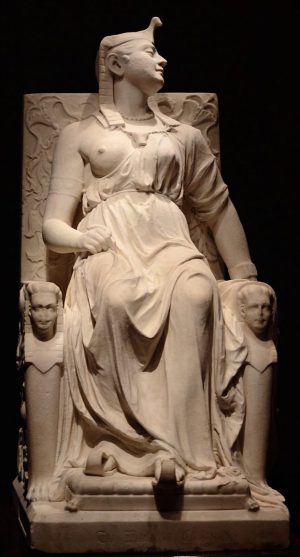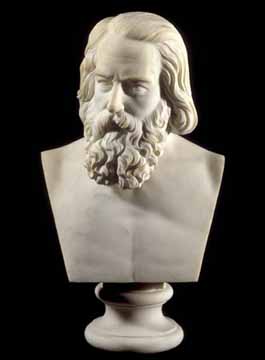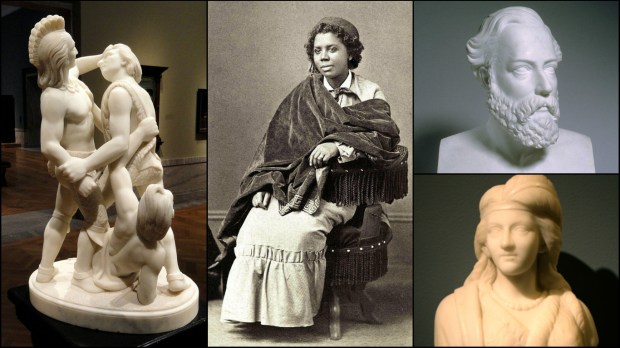
Today, Google celebrates 19th-century American sculptor Edmonia Lewis with a new Doodle by Sophie Diao, showing her at work on one of her most famous pieces, The Death of Cleopatra, currently on display at the Smithsonian in Washington, D.C.
Lewis is considered the first woman of African-American and Native American heritage to become globally renowned as a fine arts sculptor. Born in 1844 to a father of Afro-Haitian descent and a mother of Mississauga Ojibwe and African-American heritage, she was orphaned by the age of 10 and lived with her Chippewa relatives.
Author and Historian Pat McNamara has written that Lewis discovered her calling to be an artist while in Boston on a childhood trip. Lewis’ older brother, a successful entrepreneur, paid for her education and she entered Oberlin, the first integrated college in America, in 1859. But after being accused of trying to poison two white classmates and attacked by a racist mob, she moved to Boston to pursue art. According to McNamara, by 1865, when Lewis was just 20 years-old, she had raised enough money to move to a well-established art colony in Rome. In a New York Times interview titled “Seeking Equality Abroad,” Lewis stated:
I was practically driven to Rome, in order to obtain the opportunities for art culture, and to find a social atmosphere where I was not constantly reminded of my color. The land of liberty had no room for a colored sculptor.
In Italy, says McNamara, Lewis found a “real republic,” where people “left their race prejudices at home.” She remained there for the rest of her life where she achieved fame and notoriety for incorporating African-American and Native American cultural themes into her Neoclassical style sculpture.
Lewis was a Catholic, and people who met her frequently called her “devout.” McNamara says that while everyone seemed to believe she converted to Catholicism in Rome, more recent studies show she was raised Catholic by her Native American relatives. Catholic themes played a larger role in her work as the years went on, though, sadly, most of her religious work has not survived.
Lewis brought a uniquely African perspective to her religious work. One critic, says McNamara, observed that in her sculpture of the Magi, the preeminent figure was the African king, rather than the “Caucasian or the Asiatic.” Not surprisingly, Lewis had great empathy for those who were treated unfairly or unjustly. In 1871, she told a reporter: “I have a strong sympathy for all women who have struggled and suffered. For this reason the Virgin Mary is very dear to me.”

The subjects of Lewis’ sculptures reflected her own background and personal interests, which included abolitionists, biblical characters, and celebrities. Time magazine reports that once when Henry Wadsworth Longfellow was in Rome, Lewis followed him around the city secretly sketching him, and then created a bust of him that Harvard University later purchased.
Lewis’ art was in great demand and she proved herself a successful businesswoman. An American newspaper noted in 1873 that she earned $100,000 in commissions that year. People like President Ulysses S. Grant and Pope Pius IX visited her studio. A reporter at the time described her this way:
Although a fluent talker when the theme is such as to arouse her enthusiasm, she has something of the habitual quietude and stoicism of the Indian race. In person she is rather below the medium stature, and strong and supple rather than delicately made. She bends slightly forward in speaking, pronounces slowly and deliberately, and has a trace of the sadness of both races in her manner, notwithstanding her assured artistic success.
Lewis continued to win praise for her artwork until she died, which is considered to be somewhere between 1890 and 1907. Her work is displayed in museums worldwide, and is in high demand by collectors.

